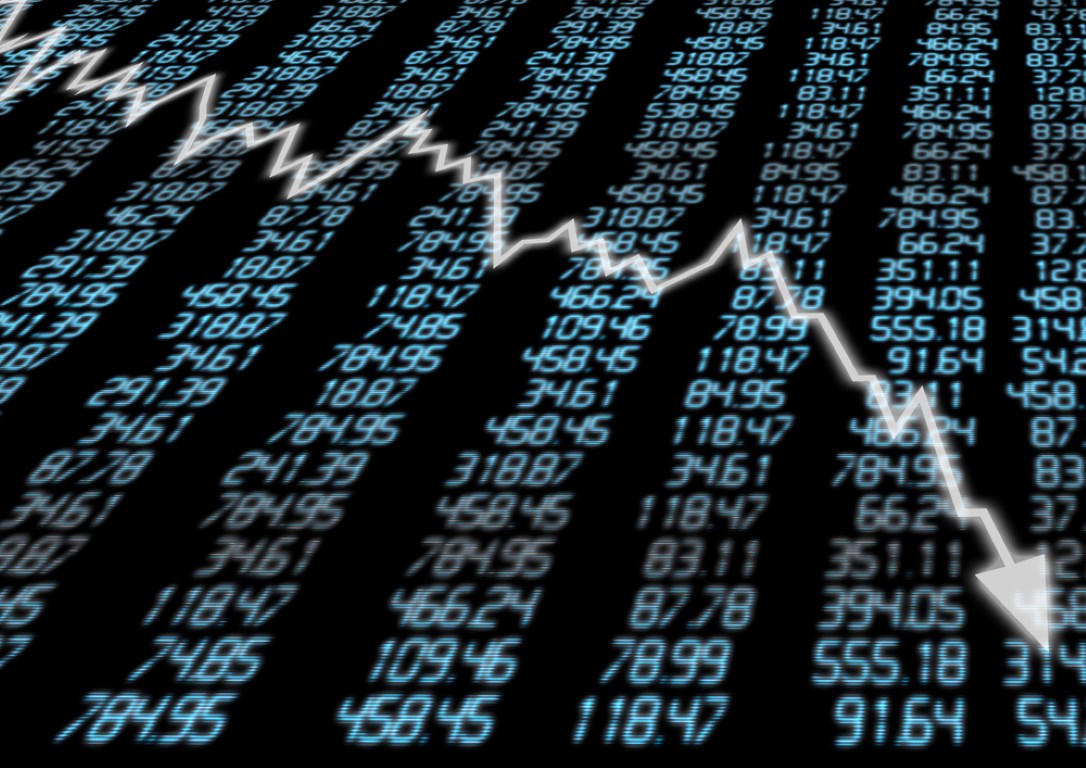Markets decline amid trade war fears
March 23, 2018 | Expert Insights

Stock markets were down across the world amid fears of a potential trade war between China and the US.
Background
A stock market is where investors meet to buy and sell shares. It is the place where stocks and bonds are bought and sold. There are 16 stock exchanges (bourse) in the world that have a market capitalization of over US$ 1 trillion each. The New York Stock Exchange and the NASDAQ are the top stock exchanges in the US and the world. The London Stock Exchange, the Japan Stock Exchange, the Shanghai Stock Exchange and the Euronext are some of the biggest exchanges. The Bombay Stock Exchange in India is ranked 11 globally.
The Dow is a stock market index. It, along with other stock market indexes, goes through periods of general increase or general decline. A period when there is an increase is referred to as the bull market and when there is decline, it is called a bear market. There are also phases of stagnation. The first period of bull market experienced by Dow was between 1885 and 1890. It reached its peak of 78.38 on June 4, 1890. Almost immediately, the index experienced a bear market and Dow plunged up to 63% in a period of six years.
In contemporary history, the time between 2007 and 2009 was a bear market and it has been a bull market since. For the first time since 2007, the market closed above 14,000 in February 2013. The market has been rising since the US presidential elections. On January 25, 2017, the Dow closed above 20,000 for the first time ever.
Analysis
In 2018, the Dow Jones reached an all-time high of 26,000. However, soon afterward, the stock market began to decline. In February, it witnessed its steepest fall in six years. The decline was mainly due to large US tech companies like Google Exxon Mobil, Apple and Chevron reporting weak earnings. The Standard & Poor’s 500 index dropped 59 points, or 2.1 percent, to 2,762. Nasdaq fell too. At one point, the Dow Jones shed more than 800 points in 10 minutes. It dropped 1,175.21 points overall to close down at 24,345.75. The global sell off lasted multiple days before markets recovered.
There have been increased concerns over a potential trade war between China and the US. On March 2018, US President Donald Trump announced his intention to impose tariffs of 25% on imported steel and 10% on imported aluminum “for a long period of time”. In addition, the US has also slapped additional annual tariffs worth $60 billion.
This has resulted in a decline in stock markets across the world and ignited another global sell off. The S&P 500 was down 1.4 per cent to 2,774.41. Reports note that it is the biggest one-day drop the stock index has witnessed since February 8th, 2018.
According to a note by Axis Securities, indices are trading weak amid concerns that the trade war could stifle global growth. “Asian Markets are trading lower, as China has unveiled a list of 128 U.S. products as potential retaliation targets against tariffs imposed by President Donald Trump,” it said.
As it generally occurs during economic uncertainty, gold prices went up. Gold is considered a “safe haven” when "A trade war will harm both the U.S. and Chinese economies... And any harm to the U.S. economy will depreciate the dollar pushing gold higher," said Ji Ming, chief analyst, Shandong Gold Group. Indian indices, Nifty and Sensex also were down due to market performance by 1 percent each.
“We think it’s important not to overstate the direct impact of these tariffs on the global economy or equity markets at this stage.” — Mark Haefele, chief investment officer at UBS Global Wealth Management. “Our global tactical asset allocation remains pro-risk, to benefit from still-strong global economic growth.”
Assessment
Our assessment is that investors are concerned about the tariffs being imposed by the current White House. As China and the US retaliate to one another, fears of a trade war continue to escalate. This would impact the global economy and could trigger yet another collapse in the near future.








Comments